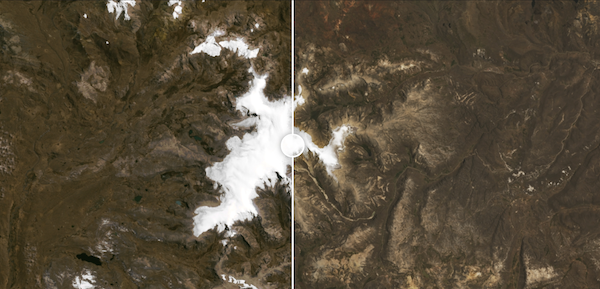
View the images in this NASA slideshow “Images of Change.”
The following activities and questions are designed to help your students use their noticing skills to move through the poem and develop their thinking skills so they understand its meaning with confidence, using what they’ve noticed as evidence for their interpretations. Read more about the framework upon which these activities are based.
-
Warm-up: Join with a partner and think about the environment around you. One person will write a list of “dos” and the other will write a list of “do nots.” Share your list with each other and then another pair. What did you notice? What patterns, if any, did you see?
-
Before Reading the Poem: View the images in this NASA slideshow “Images of Change.” What images in particular stood out to you? Why? What does this article make you think about? Why?
-
Reading the Poem: Silently read the poem “Do/Do Not” by Nisha Atalie. What do you notice about the poem? Note any words or phrases that stand out to you, or any questions you might have.
-
Listening to the Poem: Enlist two volunteers and listen as the poem is read aloud twice, and write down any additional words and phrases that stand out to you. Or, you can opt to listen to the poet read the poem.
-
Small Group Discussion: Share what you noticed about the poem with a small group of students. How do the resources from the beginning of class connect to your reading and understanding of the poem? Can you recall any photos that connect to this poem?
-
Whole Class Discussion: What is the speaker’s connection to the natural world? What is your connection? What contradictions do you see in the poem and which are “dos” and “do nots”?
-
Extension for Grades 7-8: Use one of the images from the beginning of class or something on your mind to explore the natural world. Or, write a poem that uses some of your “dos” and your “do nots.” Share your writing with the class.
-
Extension for Grades 9-12: Read the New York Times article “What Role Should Young People Play in the Fight Against Climate Change?” Participate in a class discussion about it. What small changes can you and/or your school community make?
Teach This Poem was developed for in-person classrooms, but it can be easily adapted for remote learning and hybrid learning models. Please see our list of suggestions for how to adapt this lesson for remote or blended learning.
“Recycle school or classroom paper, newspapers, beverage containers, electronic equipment, and batteries. Reducing, reusing, and recycling at school and in the classroom helps conserve energy, minimize pollution, and reduce greenhouse gases.” Discover more ways you can combat climate change in your school.
Tercet: a three-line stanza, or unit of three lines of verse, rhymed or unrhymed. Read more.
